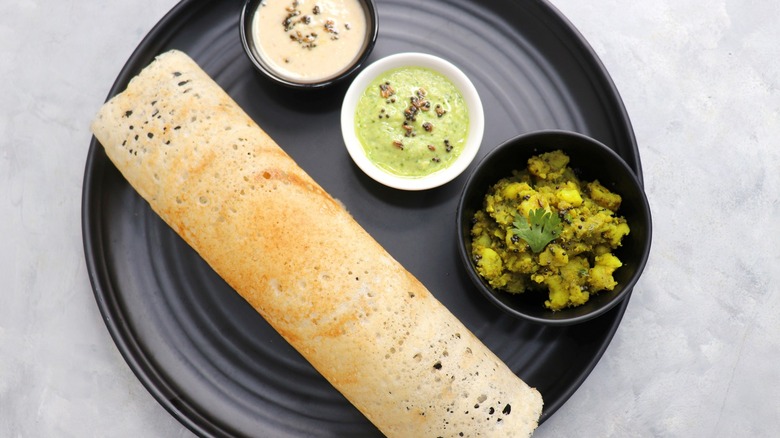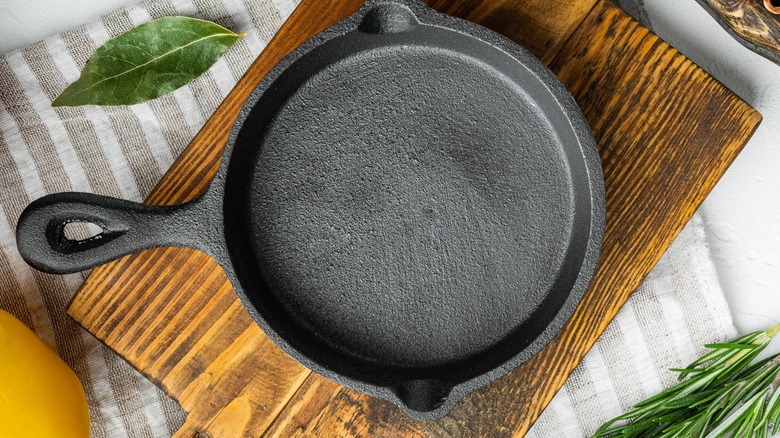For The Perfect Dosa Texture, The Pan You Use Matters
Dosa is a beloved staple of South Indian cuisine that is admired not only for its delightful taste but also for its unique texture. Crisp, paper-thin, and with a beautiful golden hue, a perfectly made dosa is a sight to behold and a pleasure to devour. But how often have you tried replicating that signature restaurant-like texture at home, only to end up with subpar results? The secret, as dosa masters will attest, often lies in the pan you choose. In India, they call it "tawa" or "tava" which is a flat, disc-shaped frying pan common in many kitchens.
While the dosa batter, with its fermented rice and split black lentils is undeniably the heart of the dish, the pan is its stage. A nonstick variety might seem like the logical choice for many home cooks. After all, nonstick surfaces promise an easy cooking experience with minimal chances of your dosa sticking to the pan. However, if it's that traditional, papery texture you're after, it might not be your best ally. Instead, cast iron offers unmatched superiority.
Why cast iron is the best pan for your dosa
A well-seasoned cast iron skillet brings several benefits to your dosa-making endeavors. Firstly, it provides an even heat distribution thanks to its thick, heavy nature. This ensures that every part of your dosa gets equal love and attention, resulting in a uniformly crispy outcome. But the real magic of the cast iron cookware lies in its seasoned surface.
A well-seasoned skillet is built up over time with layers of oil that have been baked into the iron, creating a natural nonstick layer. This surface provides a texture that allows the dosa batter to cling beautifully. As you spread the batter thinly and evenly, it latches onto the micro-textures of the pan, resulting in the dosa's signature crispness. The seasoned surface has also been known to impart a unique taste to this Indian crepe.
Lastly, even as you go for a cast iron tawa for your meal preparation, remember to pick one with very low sides to ensure the spreading and turning of your dosa happens with ease. So, the next time you're gearing up for an Indian-inspired feast, dust off that cast iron skillet and treat yourself to a texture that's as close to perfection as it gets.

